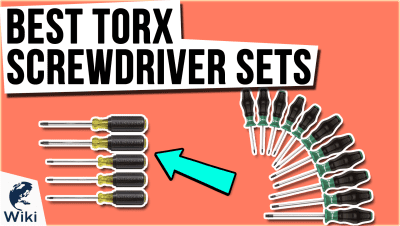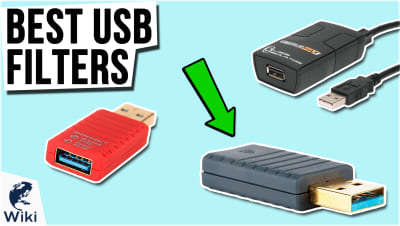The Unofficial PandaEarth Wiki
A decentralized application where players buy and trade cute pandas, PandaEarth has stood out from other crypto collectibles available on the Ethereum blockchain due to its connection to real-life pandas. We'll go over how this dapp works and why it's drawing players from around the globe. For more information on unique digital assets, try this guide to ERC-721. This video was made with Ezvid Wikimaker.
How Do I Purchase A Panda On PandaEarth?
The Pandas on the PandaEarth marketplace can be purchased with Ether, using the MetaMask browser extension. MetaMask is the same extension used by popular dapps like Factbar and CryptoKitties, and allows you to add Ether to your browser. You can add Ether to your wallet using a bank account through Coinbase if you live in the US, or ShapeShift if you want to exchange cryptocurrency. After you have Ether in your wallet, you can initiate a transaction on the PandaEarth website. You can also find pandas on marketplaces like Rare Bits and OpenSea, or exchange other tokens on the site's exchange page.
Inside The Panda Park
PandaEarth Links
- PandaEarth Website
- PandaEarth on DappRadar
- Android App
- Telegram
- Dribbble
- PandaEarth White Papers
Giant Pandas 101
In Depth
PandaEarth is a dapp on the Ethereum blockchain where users can buy and sell ERC721 tokens based on real giant pandas officially licensed by the China Panda Conservation and Research Center. The game has stood out from other breeding games due to its focus on educating people about pandas and the ability to exchange other digital assets for baby pandas, giving PandaEarth a steady stream of users since its initial release.
To explain how blockchain can allow you to own a panda, let's first cover what ERC721 is and what makes it special. Most people are familiar with Bitcoin and Ethereum, cryptocurrencies that rely on blockchain technology. The use of a decentralized ledger allows users to verify transactions without the need for a central authority. Ethereum is notable because it allows for the creation of decentralized applications, or dapps, that support the trading of alternative assets on Ethereum's blockchain.
Beyond Bitcoin and Ether, there are many other types of crypto coins available. Often companies will issue an "I.C.O.," where they sell coins that represent a stake in their business. Most assets available on the blockchain are like Bitcoin and Ether in that they are fungible, meaning all coins of a certain currency are the same. If you have two Bitcoins, and you plan to sell one, it doesn't matter which one you sell because they are worth the same amount.
Beyond Bitcoin and Ether, there are many other types of crypto coins available.
But some assets are unique, or non-fungible. ERC721 is a standard for smart contracts on the Ethereum blockchain dealing in assets that are not all the same. A popular example is Factbar, online representations of facts that are researched and verified. When you claim a Factbar, it goes through the site's smart contract and the transaction is backed up by the blockchain.
Since Factbars are unique, if you own one, no one else can own it at that time. If someone wants to buy it, they have to get it from you. Every Factbar has its own unique value, and highly-desirable Factbars are therefore very valuable because they are rare.
These unique digital assets are known as crypto collectibles. The most highly-publicized collectible was CryptoKitties. These digital cats can be bred with one another to produce new kitties, and millions of dollars worth of Ether has been exchanged among players who want to buy or breed with kitties that have rare traits. There are collectible dogs, robots, and all sorts of other items sold on the blockchain.
These unique digital assets are known as crypto collectibles.
The pandas on PandaEarth are ERC721 tokens similar to CryptoKitties. You can buy one in the marketplace, and you can create new pandas through breeding. It costs Ether to purchase or breed pandas, but since they are unique and all have different traits, rare ones may fetch a high price if you choose to sell. There are a limited amount of original release Guardian pandas, and after that, their traits are left up to breeding.
The limited number of Guardian pandas is not just to create scarcity. These pandas are based on real animals, digital copies that have their own appearance and DNA. The team behind PandaEarth is using this dapp to educate players about pandas and the struggle of maintaining their population. As such, in addition to the DNA affecting the traits of offspring, it also affects the chances of successful breeding.
While most breeding games simply involve paying other players to breed, in PandaEarth, the environment plays a role. Breeding is not successful every time, mimicking real-life scenarios. This makes rare pandas more valuable, but also helps players better understand the living conditions that are conducive to protecting these animals in real life.
This makes rare pandas more valuable, but also helps players better understand the living conditions that are conducive to protecting these animals in real life.
PandaEarth is also notable because your pandas can be exchanged for a variety of tokens. While pandas are bought and sold for Ether on the website, with five percent of each transaction going to the developers, they can also be sold on outside marketplaces. You can sell your pandas for cryptocurrency, or even exchange them on the website for another unique token, depending on its value.
While there are a lot of breeding dapps available, PandaEarth has maintained surprising popularity. This may be due to its real-life connection to conservation efforts, the ease with which pandas can be exchanged, or simply their cute and cuddly factor. Crypto collectibles are an exciting new world, and many people are rushing to earn Ether by buying them up. Prices of pandas have not risen to the insane heights of some dapps, but perhaps that's a good thing, as it's easy to join in the fun. Those in the crypto world are watching to see if these pandas can prove themselves to be a valuable digital investment in the long term.














